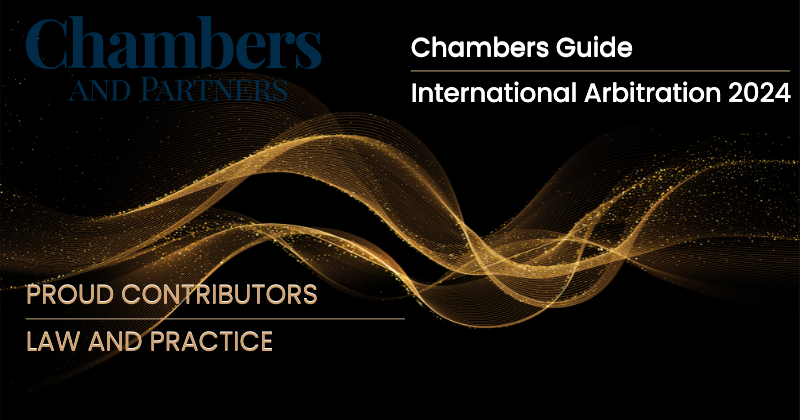By Pamella Ager | Anna Kandu
In tandem with the advent of the digital age, states and organisations are moving to adopt modern, open, data-centric and digitally enabled operations and systems. These systems offer many benefits both to the public and private sector including efficiency, cost-saving and convenience. It is on this premise that there is a distinct transition from manual to paperless and digitised records and systems.
Kenya has not been left behind. The Ministry of Lands and Physical Planning (the Ministry) has recognized the need to embark on its own transformative journey. As such, the Ministry has embarked on an initiative to digitise the Registry and the introduction of electronic land transactions systems. This initiative has been named the National Land Information Management System (the NLIMS) which we highlight in this article.
We also highlight the key features of the conversion process under the Sectional Properties Act No. 21 of 2020 (the SPA), an Act which has far-reaching effects on land ownership for developments such as apartments, units and offices.
The Digitisation of Land Records
NLIMS is a digitised land records system aimed at improving service delivery for the general public in relation to land transactions. NLIMS’ objective, as pronounced by the Ministry, is to enhance efficiency, transparency and security of land records, while reducing land transaction costs and opportunities for fraud. This digitised system is set to go hand-in-hand with the other land management developments, creating a platform for the smooth transitioning of other proposed mechanisms.
Legislative Background
The recent milestones in the development of a digitised land registration framework are anchored in various laws and statutes as stipulated below:
a. The Constitution of Kenya, 2010
The Constitution of Kenya, 2010, at Chapter Five deals with matters relating to land and the environment. Article 60 of the Constitution provides that land in Kenya shall be held, used and managed in a manner that is equitable, efficient, productive and sustainable, in accordance with principles such as sustainable and productive management of land resources and transparent and cost-effective administration of land.
b. Land Act, 2012
Pursuant to section 6 (h) of the Land Act, 2012 the Cabinet Secretary is empowered to co-ordinate the development and implementation of a National Land Information System, in collaboration with the National Land Commission. This section has ushered in the advent of the digitised records at the Registry through a contemplated “one-stop shop’’ system.
c. Land Registration Act, 2012
The Land Registration Act, 2012 (LRA) at section 54 (5), aims at streamlining land administrative processes. It stipulates that the Registrar shall register long-term leases and issue certificates of lease over apartments, flats, maisonettes, town houses or offices having the effect of conferring ownership, if the property comprised is properly geo-referenced and approved by the statutory body responsible for the survey of land.
d. Sectional Properties Act, 2020
The SPA at section 13 (2), provides that all long-term sub-leases that are intended to confer ownership of an apartment, flat, maisonette, town house or an office that were registered before the commencement of the SPA, shall be reviewed to conform to section 54 (5) of the LRA highlighted above.
e. Land Registration (Electronic Transactions)
Regulations, 2020
The Land Registration (Electronic Transactions) Regulations, gazetted in July 2020 (the Regulations), provide the framework for the roll-out of an electronic land transactions system. The Regulations provide for the conduct of searches on an electronic system, valuation for payment of stamp duty online and registration of interests in land on the electronic land register. The Regulations also make provision for the execution of instruments using electronic signatures by parties.
The Conversion of Units
In a bid to harmonise legislative provisions specifically in the LRA and SPA, the Ministry is spearheading various initiatives including the conversion of titles. This is being undertaken by replacing old land reference numbers with new title numbers, created under newly established land registration units. The conversion process is set to unify the land registration systems, while conforming to sustainable land management principles.
In this regard, on 7th May 2021, the Ministry issued a Notice (the Notice) stating that it would work towards the conversion of longterm leases registered based on architectural drawings to conform to section 54 (5) of the LRA. The Notice also provides that the Ministry shall no longer register long-term leases supported by architectural drawings to confer ownership. Additionally, registration will be premised on a sectional plan with the property being geo-referenced and approved by the Director of Surveys. We shall keep abreast with any developments on this Notice post publication of this edition of the Newsletter and shall issue further insights on the same as and when necessary.
Sectional Property
Some eight (8) years since the enactment of the land laws in 2012, the newly enacted SPA has come into force, replacing the earlier Sectional Properties Act of 1987. The enactment of the SPA was intended to align registration of sectional properties with current land legislation, noting that the Registered Land Act (Cap. 300) Laws of Kenya (RLA), which substantively governed sectional units under the 1987 statute, was repealed. The SPA has not departed significantly from the RLA. However, the SPA emphasises the aim of regulating and providing for the division of buildings into units that can be owned by individuals, while providing for the use and management of common property. Some of the salient features introduced by the new SPA include:
a. Unexpired Residue of the Term on the Title
The SPA provides that it shall only apply in relation to land that is held on freehold or leasehold title with a residual term of not less than twenty-one (21) years, with an intention to confer ownership.
b. Conversion of Units and Issuance of Certificates of Lease
Where sub-leases intended to confer ownership of an apartment, flat, maisonette, town house or an office and were registered before the commencement of the SPA, the said sub-leases shall be reviewed in order to conform with the provisions of the LRA to the extent that the property is geo-referenced and approved by the Director of Surveys, in order to issue Certificates of Lease within a period of two (2) years.
c. Closure of Old Registers
The SPA also provides that the Registrar shall close the registers made under the Certificate of Title/Lease and register the sectional plan in a sectional plan register. The Registrar shall proceed to open new registers depending on the nature of interest that was in the Title/Lease that was submitted.
d. Restriction of Use and Density
The SPA also introduces restrictions on the by-laws of a corporation under the statute from materially changing the use or density of the common property, without the approval of the relevant county government.
e. Dispute Resolution Mechanisms
The SPA provides for both internal dispute resolution mechanisms through a Dispute Resolution Committee (DRC) and recourse to the Environment and Land Court (ELC) on appeal from the DRC’s decision.
Procedure for Conversion
With regard to the process to be followed for conversion, firstly, all sectional plans submitted for registration will need to be geo-referenced; to indicate the parcel plans, the number identifying the unit, the approximate floor area of each unit, and the user of the units.
Thereafter, the plans must be signed by the proprietor, signed and sealed by the Director of Surveys, registered and a Certificate of Title/Lease issued for each unit.
For purposes of conversion of already registered long-term sub-leases, the owners of the property will be required to submit the following documents at the Registry:
- A sectional plan
- The original title document (i.e. head title)
- The long-term lease previously registering the unit
- The rent apportionment for the unit
The Registrar may dispense with the production of the original title, if the developer is unwilling or is unavailable to surrender the title for the purposes of conversion. Upon submission of the above, the sectional plan will be registered and the original register closed. A new register will thereafter be opened for each unit, with a registered sectional plan. Finally, a Certificate of Lease shall be issued.
Way Forward
We note that digitisation of land records does not come without its fair share of challenges. Not only does the adoption of technology pose a major challenge due to a cultural heritage of “paper filing”, but several rules and regulations still require approval by the relevant state agencies, to effectively implement a digitised system. Further, the digitalisation of any record management systems including that of land, requires security features that would guarantee the security of land records and boost public confidence.
Moreover, in spite of the developments, there are various concerns around the conversion process. Some aspects of the conversion procedure for instance remain unclear, while the Conversion Guide issued by the Ministry does not exhaustively address the concerns. In this regard, it is noted that the draft Sectional Property Regulations (currently undergoing stakeholder consultation) are under consideration. The Regulations, once promulgated, are set to provide clarity on the processes and documentation required for the conversion process. Until then, stakeholders and the general public remain in the dark on some of the procedures prescribed in the SPA.
Nonetheless, the Ministry must be applauded for the significant steps it has made towards the realisation of an effective land management system, as contemplated under the Constitution. It is the hope of Kenyans that the next steps taken by the Ministry will accelerate and improve the ongoing digital transformation with effective stakeholder participation, to ensure that all views are taken into account.





